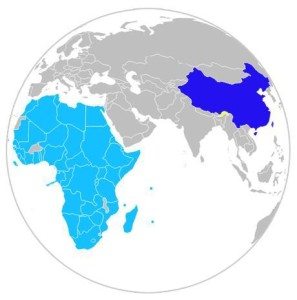The Africa Report reports that if energy exports between Sudan and Ethiopia get past some initial teething problems, the interconnection between the two countries will mark the second phase of what Ethiopia plans to be a major electricity export industry. The World Bank is contributing US$41 million towards this particular initiative.
Ethiopia already supplies 35 MW to Djibouti, for which it receives US$1.5 million a month, and hopes to extend this to Egypt, Kenya, Uganda, and South Sudan. Work is underway to electrify villages across the border in Somaliland, while an agreement to supply Kenya with power has been agreed in principle.
However, initial plans to export 100 MW of electricity to Sudan have been stalled by UN sanctions on the Iranian company responsible for installing three substations. Ethiopia’s state electricity utility, Ethiopian Electrical Power Corporation (EEPCo), is looking for other suppliers, with Areva and Erickson mentioned.
Further capacity to provide such exports is anticipated to soon be in place; Sudanese president Omar al-Bashir is reported to have told Ethiopia’s ambassador in Khartoum that Sudan supports Ethiopia’s 6,000 MW Millennium Dam project. Although the African Development Bank and World Bank have backed away from financing the dam because of its environmental and social impacts, the Ethiopian government is pressing ahead, with about 15% of the project already completed.
Ethiopia is also pursuing a wind strategy. Two projects are underway. The 34 turbine 50 MW Adama wind farm, which is expected to be ready in the middle of 2012, is 85% funded through the Chinese Exim Bank, with the rest being funded by the Ethiopian government. The larger Ashegoda project, in Tigray state, is being undertaken by Spanish company Vigo, and will deliver 120 MW by the end of 2013.
* Originally published on ESI, on June 13, 2012, titled “The status of Ethiopia’s electricity export plans”.
***************
Check the Energy archive for related posts.





Leave a Comment